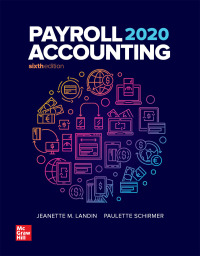20) Identify items a, b, and e in the cost-volume-profit graph shown below. $20,000 $10.000 $16.000 $14.000 $12.000 Dollar $10.000 58.000 $6.000 54 000 $2.000 0 200 400 600 800 1200 1600 1000 2000 1000 Volume 21) Bing Company's contribution margin income statement is presented below. Sales for th current period consisted of 7,500 units. Compute the company's break-even point in (a) uni and (b) dollars. Compute the margin of safety in (e) dollars and (d) percent. Bing Company Contribution Margin Income Statement Sales Variable costs Contribution margin Fixed costs Net income $225,000 135,000 90,000 48.000 $42.000 and eneficially traced to a single cost object. 6) For each of the characteristics below, identify whether it is a focus of financial accounting or managerial accounting. Use the letter F to identify financial accounting and M to identify managerial accounting, 1. Users are generally investors, creditors, analysts, and regulators. 2. Used to assist managers in making planning and control decisions. 3. Information is structured and controlled by GAAP. 4. Information is available quickly without the need to wait for an audit. 5. Information is mainly historical with some predictions. 6. Emphasis of the information is a company's projects, processes, and divisions. 7. Information is mostly monetary, but includes nonmonetary information. 7) Place each of the following costs of a Blu-ray disc manufacturer in the appropriate column. 3. b. c. Product cost Direct Direct Factory Cost item Period cost materials labor overhead Factory maintenance salary, $40,000 Salary of factory supervisor, $70,000 Salary of production worker, $42,000 Salary of the company's d. president, $100,000 Television advertising, e. $25,000 Property tax on factory, f. $15,000 . Sales commissions, $65,000 Depreciation on factory h. equipment, $17,000 Plastic used in the manufacture of the dises, $14,000 5) Match each of the following terms with the appropriate definition (1) Direct materials (2) Indirect costs (3) Product costs (4) Prime costs (5) Fixed costs (6) Direct labor (7) Period costs (8) Conversion costs (9) Factory overhead (10) Variable costs (a) Costs that are expensed to the income statement in the period incurred.. (b) Costs that change in proportion to changes in volume of activity. () The efforts of employees who physically convert materials to finished products. (d) Manufacturing costs that cannot be separately or readily traced to finished goods. (e) Costs necessary to create a product (1) Costs incurred in the process of converting raw materials to finished products, include direct labor and factory overhead. (g) Tangible components of a finished product separately and readily traced through the manufacturing process. (h) Costs directly associated with the manufacture of finished products, include direct materials and direct labor (i) Costs that do not change in total with changes in the volume of activity. 6) Costs that cannot be easily and cost-beneficially traced to a single cost object. 6) For each of the characteristics below, identify whether it is a focus of financial accounting









